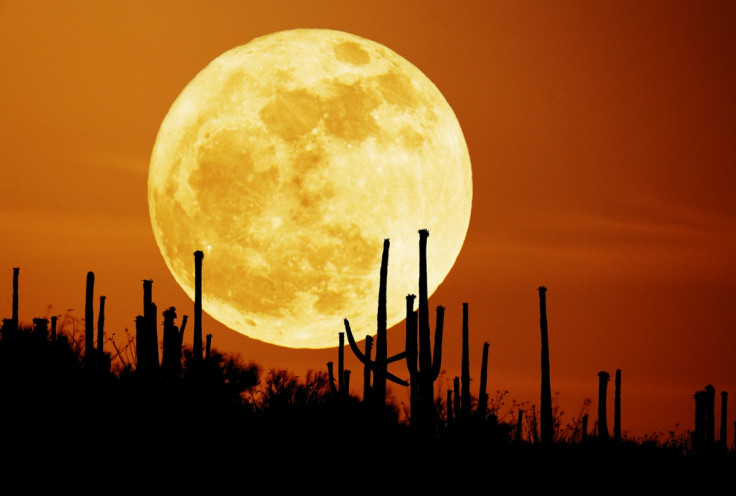Supermoon 2014: First of Three Consecutive Supermoons to Light Night Sky on 12 July

The first of three consecutive supermoons is set to take place on Saturday 12 July, with the moon appearing brighter and bigger than normal.
A supermoon occurs when the moon is closer to Earth in its normal orbit than average. It is most notable when it takes place at the same time as a full moon.
James Garvin, chief scientist at NASA's Goddard Space Flight Centre, explained: "It is called a supermoon because this is a very noticeable alignment that, at first glance, would seem to have an effect. The 'super' in supermoon is really just the appearance of being closer."
The moon will be at its fullest at midday in the UK, however people on the west coast of the US will be able to see it at approximately 4am PDT.
It should still appear bright on the nights of 11 and 12 July, Earthsky noted: "Technically speaking, the moon turns full at the instant that the moon lies most opposite the sun for the month. Because the moon stays more or less opposite the sun throughout the night, watch for a full-looking moon in the east at dusk, highest in the sky around midnight and low in the west at dawn.
"On the nights around the night of full moon, the moon looks full for a few nights."
July's full moon is the first of three consecutive supermoons. August's full moon will be the closest supermoon of the year, when it comes within 356,896km (221,764 miles) of Earth.
The next two supermoons will take place on 10 August and 9 September. In terms of impact, the supermoon will only have a minor effect on Earth, Garvin said.
Other than its change in appearance, tides will be larger than usual, Earthsky said.
Each month on the day of the full moon there will be spring tides. The next three supermoons will cause a perigean spring tide, where tides will be higher than normal.
"Will these high tides cause flooding?" it said. "Probably not, unless a strong weather system accompanies the perigean spring tide. Still, keep an eye on the weather, because storms do have a large potential to accentuate perigean spring tides."
© Copyright IBTimes 2025. All rights reserved.






















